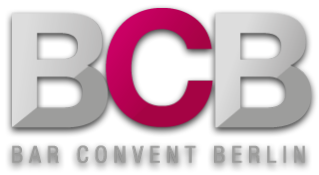Is your Bar making a Profit?
© Shutterstock
No bar business without business know-how: Angus Winchester on the economic aspects to watch out for in the hospitality industry.
In the current socio-economic climate, it has never been more obvious that running a bar is a hugely tricky way to make money. From seemingly ever-increasing costs of goods to rising inflation and changing social trends to the hangover from the pandemic that led to a ‘brain drain’ of experienced staff I see first-hand as margins decrease. In addition, managing cashflow is critical and is only getting harder. And while we read constantly of cool new spots opening and awards aplenty, we rarely get the same notices of bars and restaurants closing – and yet they are closing in increasing numbers as the business aspect of the hospitality industry tightens.
Why we don't talk about profits in the bar business
And for many readers here: it’s not your fault but it is your problem. Profit is the key to running a successful business as it’s the oxygen any business needs to survive. And yet so few in our industry have ever studied Business and most often what we know is what our colleagues have gleaned over the years. We rarely talk publicly about profit as an industry for three reasons: we are making so much money it’s embarrassing (unlikely but it happens mainly at the high end), we are making so little it’s embarrassing (most common), or we simply don’t know how much money we are actually making or losing. I will admit that it’s only very recently I fully understood depreciation on a Profit & Loss (P&L) sheet, and I have been reading them for nearly 25 years.
When you should not open a bar
A side note here that terms like “P&L”, “Gross and Net Profit” and “Cashflow” are now as critical to a manager or owner of a bar as “shake”, “stir” and “strain” are for bartenders. So many bartenders I know are cognisant of how to make drinks yet clueless as to how to make money off making drinks and yet they still desire to open a business that does just that. I can only say one thing about this: If you aren’t interested in the business side of opening a bar, then don’t open a bar!
How to become profitable
And because we as bar managers rarely properly understand the financial ins and outs of the bar, we generally do not teach our staff about them. So, many of them have the same mindset as our guests: they see a bottle of gin in the shops for e.g. 20 Euro and see it being sold for 10 Euro a glass and assume a massive profit is being made. The result: they think they can drink, give drinks away and generally act ‘unprofitably’ due to ignorance and not malice. Yet as soon as you properly train staff about profit, they begin to act with profit in mind and the business gets a more reliable supply of the oxygen it needs to thrive and grow. And the most effective way of training this is to get 100 coins together and explain it as follows.
Create a cost and profit overview of your bar: Here's how!
Firstly, go back over last year’s figures and find your total revenue for the year. Then go and separate out that total figure by outgoings and separate those outgoings into the three groups:
- Fixed Costs (the same outgoings every month that do not change such as rent and insurance)
- Flux Costs (those outgoings that you have some control over such as utilities, tax, credit card fees, small goods and the like)
- Prime Costs (those things you have direct control over like drink prices, stock holding and wages).
The greater detail you can get for these the greater impact it will have during training.
The 100 Coin Method
Secondly, get 100 coins and sit with your staff. Start with the 100 coins that represent the total money you took last year and the slowly take away the outgoings you identified above. So, take away the Fixed costs of rent, insurance, tax from your 100 coins. Then the Flux costs you paid and finally the Prime costs and what is left is Profit. But use this time to explain and demonstrate how controlling the costs makes a difference to the end profit – however small. Anything can save coins such as:
- Reducing the costs of a cocktail
- Reducing breakages
- Changing working hours to be more efficient
- Being more mindful of running water or leaving lights on or running the glasswasher more efficiently
It may seem like just a coin or two, but they mount up and the 100 Coin method makes it highly visual and easy to understand for all staff.
Open Book Management: Transparency brings advantages
Finally, once you have explained this all then ask for suggestions to save more coins. Collaborate with the team to reduce the numbers that are bad and increase the numbers you want. Even go so far as to share savings with them as a team. In management speak this process is known as “Open Book Management” and while it might be uncomfortable it will reap huge benefits moving forwards. Just try it!
